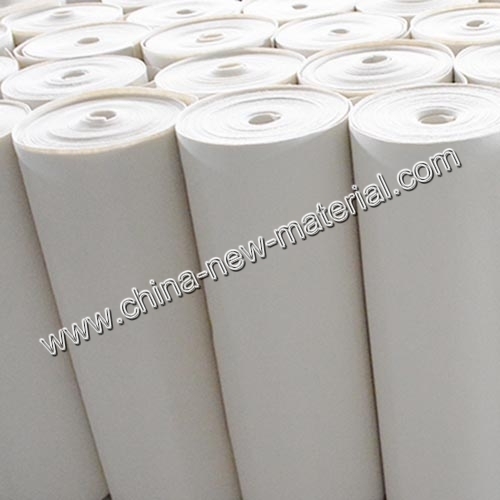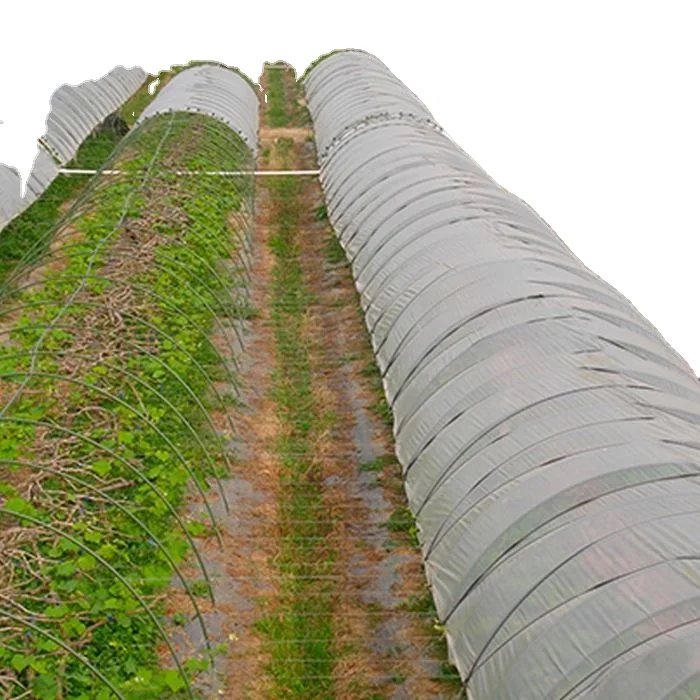
Non-woven Industries Development. Non-woven fabric was invented in the petrochemical industry following the development of plastic cloth (film). It weighs less than plastic cloth and provides greater ventilation. It is used extensively in products for hygiene and medicine like sanitary napkins and facial towels. Later, engineering was applied to it. Non-woven fabrics are utilized to shield plants from the effects of cold. While non-woven fabrics use an entirely different manufacturing process as compared to plastic films, the raw materials are very similar. This includes PE (polyvinylchloride), EVA(Ethylene Vinyl Acetate Copolymer), EVA/polyethylene, and PVA/polyvinyl ether. The traditional plastic film is made by melting the plastic after that inflating it. The film is continuous and the material can extend indefinitely. The film has no pores. The film is inert and blocks any movement or exchange of molecules. The market for textiles was growing rapidly and synthetic chemical fibers made of the above-mentioned materials became the most sought-after. The chemical fibers, however can be converted into cloth via the traditional warp-weft weave. Non-woven fabrics are made by combining fibers in the same plane at different angles, in all directions instead of using traditional methods of warp and weft. It provides better material properties and is easier to produce than traditional weaving materials. This cuts down on the traditional drawing process and results in less production costs. Non-woven fabrics have been widely used in the apparel industry in recent times. Because of advances in the field of material research and the development of production techniques, non-woven fabric has become more diverse and is being used more widely. You will find a variety of different materials and products everywhere you go in your daily life. Because of their lightweight and easy production, non-woven fabrics have been gaining popularity in the field of agriculture. Look at this non woven weed fabric for advice.

Non-woven fabrics in agriculture: applications of non-woven fabrics used in agriculture. Non-woven fabric was first employed in Europe to keep carrots safe for early harvesting. Additionally, to prevent whiteflies and tomato leaf viruses, non-woven fabrics were first introduced to Europe into the farming industry in 1978. Non-woven fabrics used in the United States to mulch cantaloupes. Sweet peppers. tomatoes. Root vegetables. Carrots. Radishes. Cabbage. Lettuce. They are mostly employed for heat preservation, promoting early harvesting and for insect control. Non-wovens are a great way to cover mats that are grass-proof and raise the temperature of soil. Short fiber is also used for the creation of water absorbent blankets, which are placed on nursery beds so that the roots will fully absorb any water. They can also be used to produce turf, or used directly as lawns for gardens. They are used to plant large woody trees like the fruit trees as well as garden trees. Non-woven fabrics, which aren't made of yarn, are utilized in Taiwan to cover the crops. These are used extensively to manage greenhouses' climate and help conserve energy. Double-layered cover and canopy curtains reduce heat radiation and solar radiation at nights. High-density spun-bonded non-woven TAVIK fabrics were used in the early days to protect and shade cauliflower bulbs. They quickly adopted it by farmers due to its thermal conductivity that was low as well as ability to shade. In the following years, it was used to heat preservation and the cultivation of leaf vegetables that was insect-proof. It also served as a shade and heat preservation as well as cultivation for pineapples and fruit trees. Because of Taiwan's unique ecosystem and climate, non-woven sector growth is slow. Nonwoven fabric producers in Taiwan continue to develop nonwoven technologies. The main focus of Taiwan nonwoven fabric manufacturing is water absorption, air permeability and water repellency. The company has stepped up its research in order to enhance its capability to preserve and store agricultural products. It hopes it will be able develop new applications. See this agriculture non woven fabric suppliers for more info.
